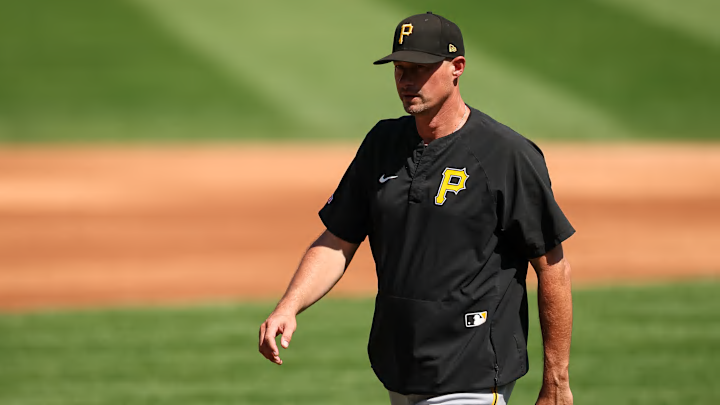October should’ve felt like a checkpoint for a club that spent the last decade selling patience as a plan. Instead, 2025 closed like a rerun the city’s already seen — same holes, same hedges, same messaging laid over an offense that never arrived. The pitching carried its end of the bargain and then some. The bats never showed up. That disconnect isn’t bad luck; it’s an organizational blind spot the Pirates refused to correct, from roster construction to day-to-day lineup intent.
The clearest indictment is how thoroughly the lineup sabotaged elite run prevention. You can’t talk about “competitive windows” while asking your starters to pitch shutouts just to keep pace. Pittsburgh walked into 2025 knowing they needed real thump and real on-base skill to support a top-shelf rotation…and then chose minor moves, bargain bats, nostalgia, and “maybe it clicks” bets.
The blueprint Pittsburgh Pirates still won’t follow after 2025 collapse
Start with the unforgivable: taking a bottom-tier offense and…not fixing it. In 2025, the Pirates finished last in runs, home runs, slugging, OPS ... pick your oxygen level, the Pirates ran out of it. The approach looked scattershot: unproven prospects thrust into everyday roles at the same time, paired with low-upside veterans asked to “stabilize” without actually producing. That’s not a bridge; that’s a bottleneck. When your depth chart reads like a tryout sheet, you’re not insulating young hitters, you’re exposing them.
And so a historic season from Paul Skenes turned into a study in waste. Ten wins, ten losses is a cruel box score for a 1.97 ERA and 216 strikeouts; it reads like a team stat, not a pitcher stat. Skenes didn’t just pitch like an ace — he pitched like a tide that should’ve lifted everything around it. Instead, the offense left him marooned, forcing perfection and punishing anything less.
The veterans who were supposed to anchor the lineup never steadied the ship. Bryan Reynolds delivered an underwhelming year (.245/.318/.402, 99 OPS+). Oneil Cruz flashed the tools that keep scouts raving, but finished at .200/.298/.378, with long cold spells that made those flashes feel like lightning with no rain. When your top names oscillate between “maybe” and “not today,” the rest of the order gets buried under matchup gymnastics and wishful thinking.
The budget choices are doubling down on the problem. On Oct. 14, the Pirates claimed Will Robertson off waivers, a quintessential Quad-A flier, and treated it like early offseason business as usual after an anemic year. The message was louder than any presser: they’d still rather take low-cost darts than buy a bat that alters how opponents pitch them. On the margins, that approach is fine. When your central flaw is zero impact contact, it’s a disqualifying plan.
What didn’t the Pirates learn? That development without reinforcement is just a holding pattern. That elite arms are a gift you don’t squander waiting for “internal growth” to catch up. That you can’t shop the clearance rack for middle-order production and call it strategy. 2025 demanded intentionality: a real on-base engine at the top, a left-handed masher to punish mistakes, and at least one veteran with plate discipline to set the tone for the kids. Instead, Pittsburgh kept the wallet closed, kept the faith vague, and kept asking the rotation to cover for a lineup that couldn’t carry its end.
If 2026 is going to look different, the lesson can’t be “hope the same bets hit.” The lesson has to be an organizational pivot: acquire proven OBP, buy a power bat that alters how opponents pitch your best hitters, and stop treating elite pitching as a life raft for a bottom-tier offense.
